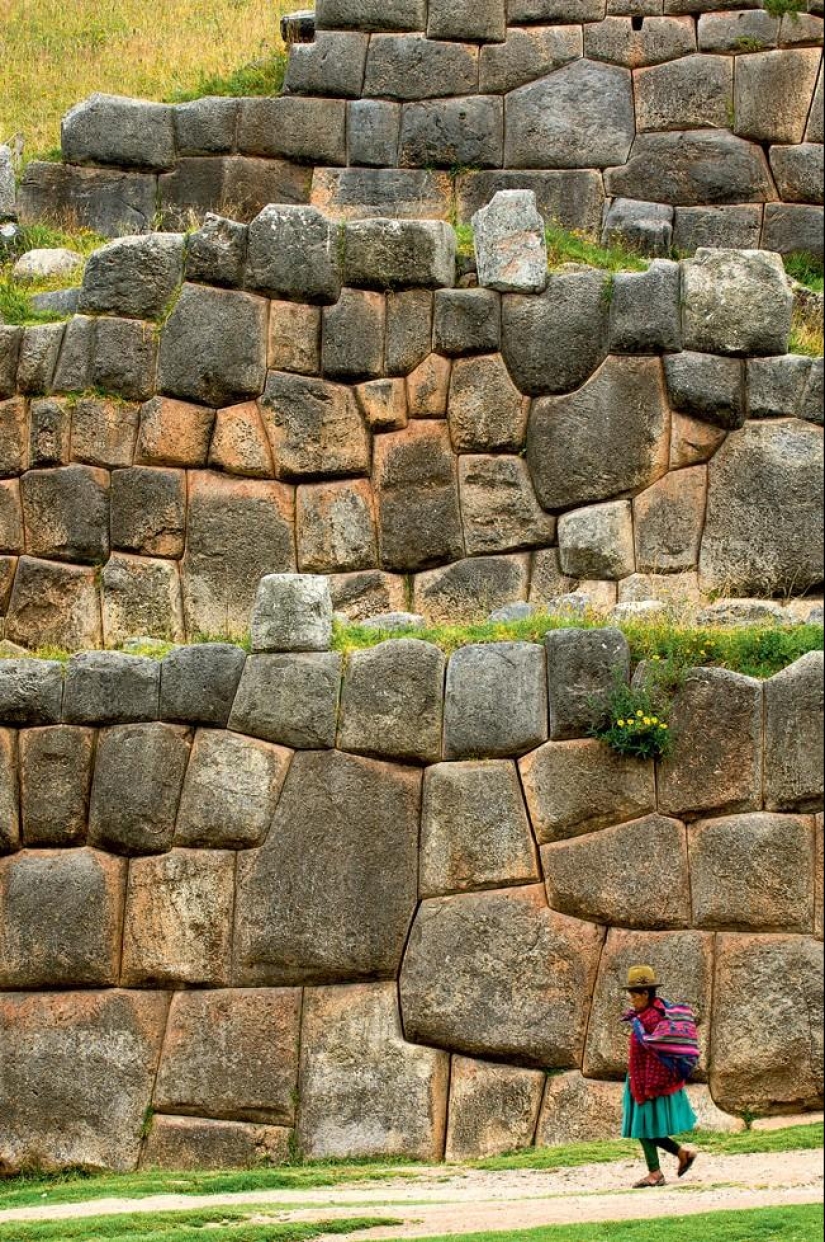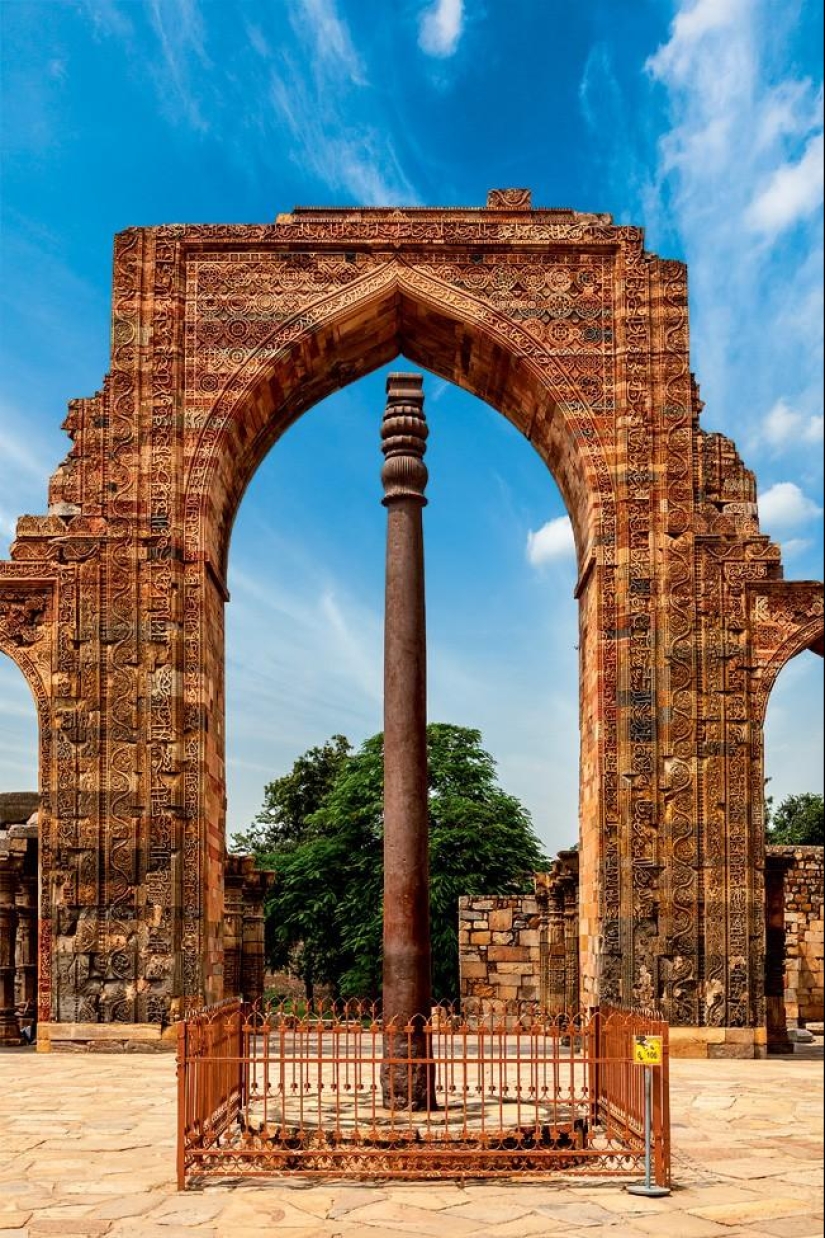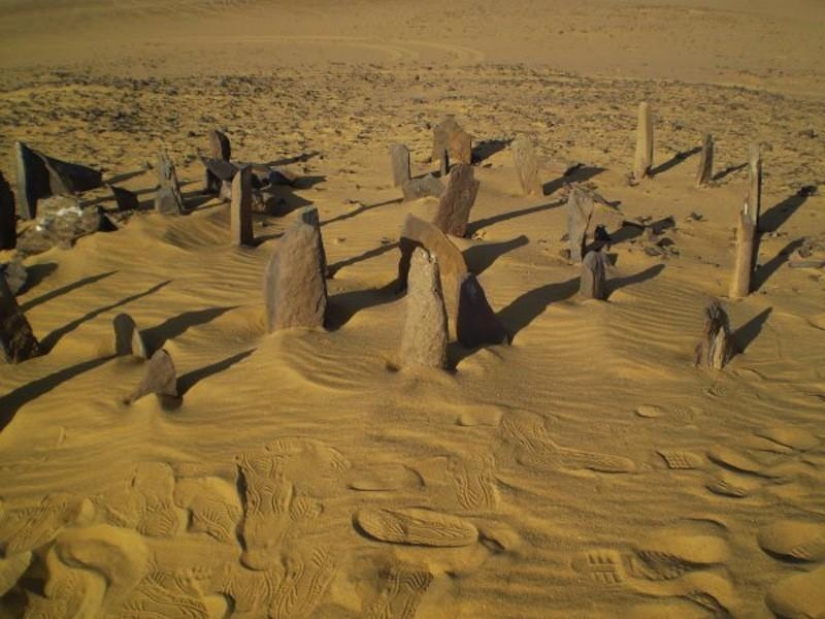The 20 most mysterious objects in the world
Categories: Design and Architecture | World
By Pictolic https://pictolic.com/article/the-20-most-mysterious-objects-in-the-world.htmlWe fly into space, race to build skyscrapers, clone living organisms and do a lot of things that until recently seemed impossible. And at the same time, they are still unable to solve the riddles of builders and thinkers who lived millennia ago. An ancient stone weighing a hundred tons surprises us more than a computer the size of half a palm.


Every year on the days of the spring and autumn equinoxes, thousands of tourists gather at the foot of the sanctuary of the supreme deity of the Maya — the Feathered Serpent. They observe the miracle of the "phenomenon" of Kukulkan: The snake moves down along the balustrade of the main staircase. The illusion is created by the play of triangular shadows cast by the nine platforms of the pyramid at the moment when the sun, tending to sunset, illuminates its northwest corner for 10 minutes. If the sanctuary had been shifted even by a degree, nothing like this would have happened.
An altar, an observatory, a tomb, a calendar? Scientists have not come to a consensus. Five thousand years ago , an annular moat and ramparts around it with a diameter of 115 m appeared . A few centuries later, the ancient builders delivered 80 four—ton stones here, and a couple of centuries later - 30 megaliths weighing 25 tons. The stones were set in a circle and in the form of a horseshoe. The form in which Stonehenge has come down to our days is largely the result of human activity of recent centuries. People continued to work on the stones: peasants chipped off pieces of amulets from them, tourists marked the territory with inscriptions, and restorers figured out for the ancients how they had everything right here.

In total, about 4,000 megaliths up to four meters high are arranged in slender alleys near the city of Karnak. The rows run parallel to each other or fan out, forming circles in some places. The complex dates back to the V–IV millennium BC. In Brittany, there were legends that it was the wizard Merlin who made the ranks of Roman legionaries petrify.

Pre-Columbian artifacts scattered near the Pacific coast of Costa Rica were discovered in the 1930s by banana plantation workers. Hoping to find gold inside, vandals destroyed many balloons. Now most of the remaining ones are kept in museums. The diameter of some stones reaches 2.5 meters, the weight is 15 tons. Their purpose is unknown.

In 1979, someone under the pseudonym R.C. Christian ordered a construction company to manufacture and install a monument — a structure of six granite monoliths with a total weight of more than 100 tons. The four side slabs are engraved with the Ten Commandments for descendants in eight languages, including Russian. The last point reads: "Don't be a cancer for the Earth, leave a place for nature too!"

Semi-conical structures resembling huge beehives (up to 20 m high) appeared in Sardinia at the end of the II millennium BC, before the arrival of the Romans. The towers are built without a foundation, from stone blocks superimposed on each other, not fastened with any mortar and held only by their own gravity. The purpose of nuraghs is unclear. It is characteristic that archaeologists have repeatedly discovered miniature models of these bronze towers during excavations.

The Archaeological Park at an altitude of 3,700 meters and an area of 3,000 hectares is located north of the capital of the Inca Empire. The defensive and at the same time temple complex was built at the turn of the XV–XVI centuries. Zigzag battlements, reaching 400 meters in length and six in height, are made of 200-ton stone blocks. How the Incas installed these blocks, how they adjusted them one under the other is unknown. From above, Sacsahuaman looks like the toothy head of the cougar of Cuzco (the city was founded in the form of a sacred animal of the Incas).

The settlement of the Bronze Age (III–II millennium BC) is located at the same latitude as Stonehenge. A coincidence? Scientists don't know. Two rows of circular walls (the diameter of the far one is 170 m), a system of drains and sewerage, a well in each house are evidence of a highly developed culture. The monument was discovered by students and schoolchildren from an archaeological expedition in 1987. (In the photo there is a reconstruction model.)

The Celts called it the fairy mound and considered it the home of one of their main gods. The circular structure made of stone, earth and rubble with a diameter of 85 meters was erected more than 5,000 years ago. A corridor leads inside the mound, ending with a ritual chamber. During the winter solstice, this chamber is brightly illuminated for 15-20 minutes by a ray of the sun falling through the window above the entrance to the tunnel.

The bizarre structure was built alone for 28 years (1923-1951) by Latvian emigrant Edward Lindskalnin in honor of lost love. How a man of modest height and build moved huge blocks in space remains a mystery.

Statues in a place called Temehea-Tohua in the Marquesas Islands depict strange creatures whose appearance in the mass consciousness is associated with aliens. They are different: there are large-mouthed "reptiloids", and there are others: with small bodies and disproportionately large elongated heads-helmets with huge eyes. They have one thing in common — an evil expression on their faces. Whether they were aliens from other worlds or just masked priests is unknown. The statues date back to about the beginning of the II millennium.

Monuments of huge stone platforms and pillars located underwater at a depth of 5 to 40 meters were discovered in 1986. The main of these structures has the form of a pyramid. Not far from it there is a large platform with steps, similar to a stadium with spectator stands. One of the objects resembles a huge head, like the moai statues on Easter Island. There are disputes in the scientific community: many believe that the formations lying at the bottom of the ocean are exclusively of natural origin. But loners like Masaaki Kimura, a professor at Ryukyu University, who has repeatedly dived to the ruins, insist that there was not without a person.

The circular system of concentric moats and wooden fences was created between 5000 and 4800 BC. Now the complex has been reconstructed. Presumably, it was used as a solar calendar.

One of the largest and oldest stone structures in South Africa was built from the XI century, and in the XV was abandoned for an unknown reason. All structures (up to 11 meters in height and 250 in length) were erected by dry masonry. Presumably, up to 18,000 people lived in the settlement.

The iron column with a height of more than 7 meters and a weight of more than 6 tons is part of the Qutb Minar architectural complex. It was cast in honor of King Chandragupta II in 415. For unclear reasons, the column, almost 100% made of iron, is practically resistant to corrosion. Scientists are trying to explain this fact for various reasons: the special skill and technology of ancient Indian blacksmiths, the dryness of the air and specific climatic conditions in the Delhi area, the formation of a protective shell — in particular, as a result of the fact that the Hindus anointed the sacred monument with oils and incense. Ufologists, as usual, see in the column another proof of the intervention of extraterrestrial intelligence. But the secret of the "stainless steel" has not yet been solved.

47-meter spider, 93-meter hummingbird, 134-meter eagle, lizard, alligator, snake, other zoomorphic and humanoid creatures… Giant images from a bird's-eye view seem to be scratched on a vegetation-free rock, and as if with one hand, in a single style. In fact, these are furrows up to 50 cm deep and up to 135 cm wide, made at different times in the V–VII centuries.

In the sands next to the dried-up lake is the oldest archaeoastronomical monument on the planet, 1000 years older than Stonehenge. The location of megaliths allows you to determine the day of the summer solstice. Archaeologists believe that people lived here seasonally when there was water in the lake, so they needed a calendar.

A mechanical device with dials, hands and gears at the beginning of the XX century was found on a sunken ship en route from Rhodes (100 BC). After extensive research and reconstructions, scientists found out that the device served astronomical purposes — it allowed them to monitor the movement of celestial bodies and perform very complex calculations.

The ruins of the Roman temple complex date back to the I–II century A.D. But the Romans did not build sanctuaries from scratch. At the base of the temple of Jupiter are more ancient slabs weighing 300 tons. The western retaining wall is made up of a number of "trilithons" — three limestone blocks, each more than 19 m in length, 4 m in height and weighing about 800 tons. Roman technology was not able to lift such a weight. By the way, not far from the complex for more than one thousand years there has been another block — under 1000 tons.

The complex in the Armenian Highlands is considered the oldest of the largest megalithic structures (approximately X–IX millennium BC). At that time, people were still engaged in hunting and gathering, but someone was able to erect circles of huge steles with images of animals.
Recent articles

It is amazing to watch how genes are passed down from generation to generation, reflected in the appearance and mannerisms of ...

You don't have to look for Rhodesia on a map of Africa - this once promising country no longer exists. In its place is Zimbabwe ...

Hamsters are by far the cutest and funniest of all possible rodents. And despite their small size, they are very energetic and ...